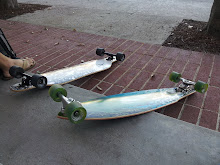How very fitting that we read this book during the week of the EMP conference, whose theme was Music and Money, since Suisman gives a delightful narrative that tracks the commodification of music and sound. I was struck by the class implications for the player piano and the phonograph, as well as its power to disseminate information to the public in a sort of democratizing process. Suisman makes the point that before the phonograph, the only way one can listen to the opera is to have enough cultural and economic capital to attend a live performance. With the phonograph, “high Art” (with the capital A) is now more widely accessible to a greater number of people.
The part about Tin Pan Alley and songwriters as hands (or pens) for hire hit close to home for me this week as well. I was just commissioned to write a song for someone who is trying to win her girlfriend back. The feeling of writing this song is very different than what I write organically for myself. I think about the song less as an artwork, and more as an object. The process of songwriting in Tin Pan Alley demarcates the difference between music songwriting as artistic process and music songwriting as a craft. Tin Pan Alley is certainly the latter. And in my case this week, the song I write for someone else is more craft than art. Songwriting in Tin Pan Alley becomes a functional process (following the oversimplified idea that a piece of art is defined when one admires it for its aesthetic form over its utility as a functional object). The songwriters, and hence the songs themselves, serve more a function for capitalistic gains rather than the transcendental purpose of spiritual fulfillment that Art (with a capital A) purportedly forwards.
Another point I would like to make that seems to be an ongoing theme of this class is the fact that this book is about music and sound, and yet the way the information is given to the reader is through describing the sounds and music via texts and pictures. the visual hegemony of epistemological knowledge binds even a book about sound and music to its rules. We learn about music and sound thru text and pictures.




No comments:
Post a Comment